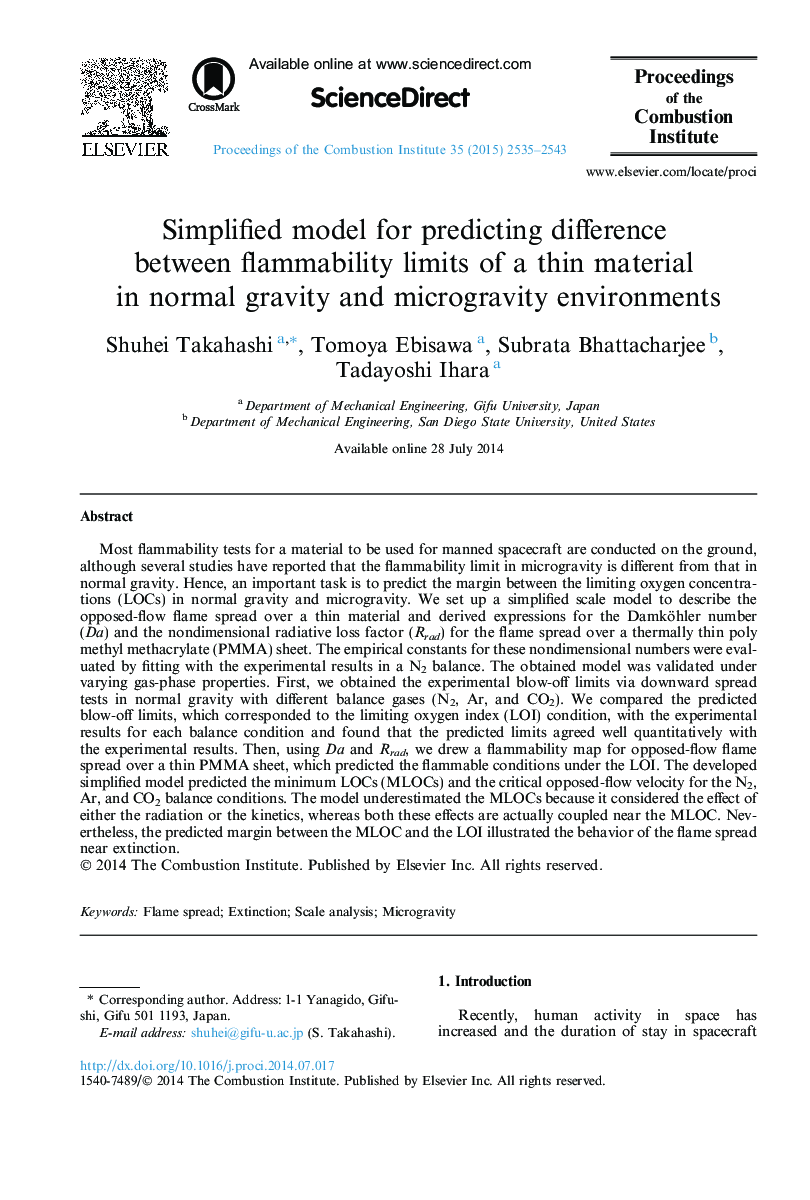| Article ID | Journal | Published Year | Pages | File Type |
|---|---|---|---|---|
| 4915499 | Proceedings of the Combustion Institute | 2015 | 9 Pages |
Abstract
Most flammability tests for a material to be used for manned spacecraft are conducted on the ground, although several studies have reported that the flammability limit in microgravity is different from that in normal gravity. Hence, an important task is to predict the margin between the limiting oxygen concentrations (LOCs) in normal gravity and microgravity. We set up a simplified scale model to describe the opposed-flow flame spread over a thin material and derived expressions for the Damköhler number (Da) and the nondimensional radiative loss factor (Rrad) for the flame spread over a thermally thin poly methyl methacrylate (PMMA) sheet. The empirical constants for these nondimensional numbers were evaluated by fitting with the experimental results in a N2 balance. The obtained model was validated under varying gas-phase properties. First, we obtained the experimental blow-off limits via downward spread tests in normal gravity with different balance gases (N2, Ar, and CO2). We compared the predicted blow-off limits, which corresponded to the limiting oxygen index (LOI) condition, with the experimental results for each balance condition and found that the predicted limits agreed well quantitatively with the experimental results. Then, using Da and Rrad, we drew a flammability map for opposed-flow flame spread over a thin PMMA sheet, which predicted the flammable conditions under the LOI. The developed simplified model predicted the minimum LOCs (MLOCs) and the critical opposed-flow velocity for the N2, Ar, and CO2 balance conditions. The model underestimated the MLOCs because it considered the effect of either the radiation or the kinetics, whereas both these effects are actually coupled near the MLOC. Nevertheless, the predicted margin between the MLOC and the LOI illustrated the behavior of the flame spread near extinction.
Related Topics
Physical Sciences and Engineering
Chemical Engineering
Chemical Engineering (General)
Authors
Shuhei Takahashi, Tomoya Ebisawa, Subrata Bhattacharjee, Tadayoshi Ihara,
